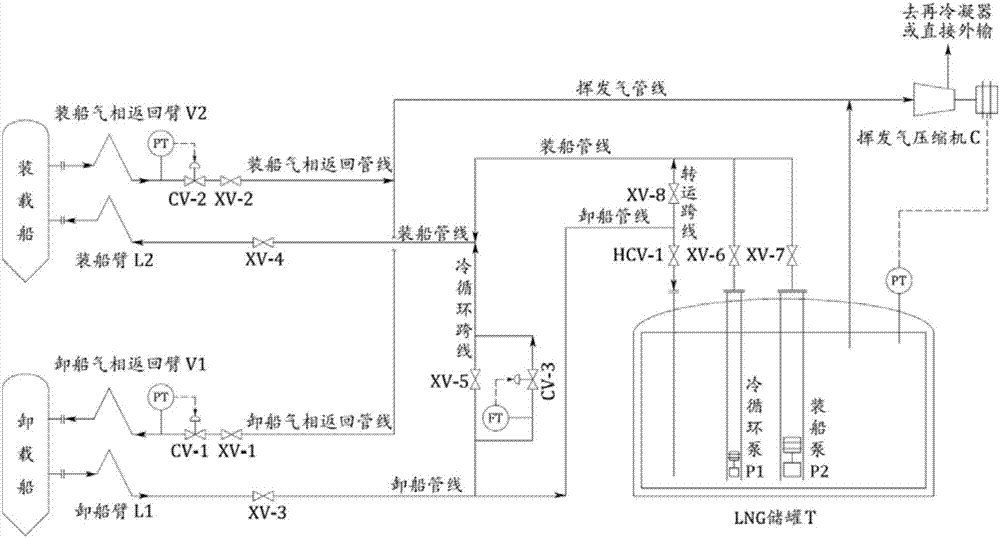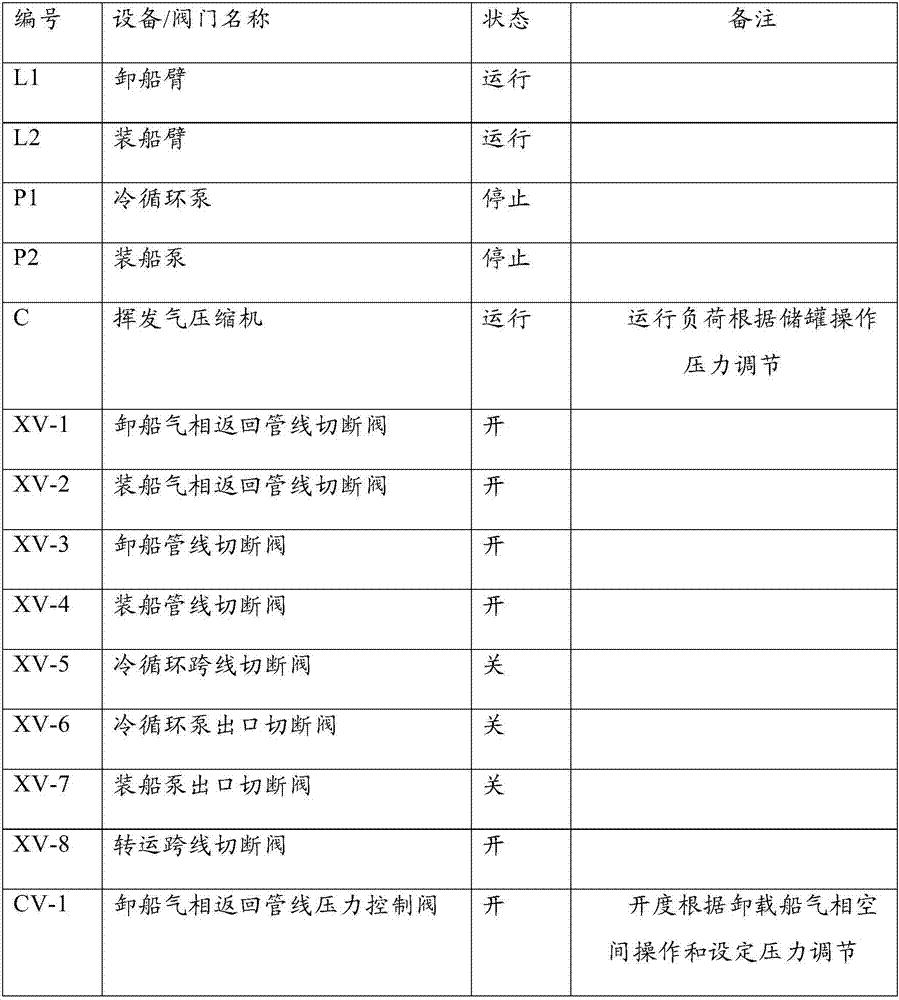Ship-to-ship transfer system based on shore-based liquefied natural gas receiving station
A technology for liquefied natural gas and receiving stations, applied in pipeline systems, liquid distribution, transportation or transfer devices, transportation and packaging, etc., can solve problems such as poor transfer speed and timeliness of transfer, power consumption of in-tank pumps, trade disputes, etc. Improve transport efficiency and save energy
- Summary
- Abstract
- Description
- Claims
- Application Information
AI Technical Summary
Problems solved by technology
Method used
Image
Examples
Embodiment Construction
[0035] The following will clearly and completely describe the technical solutions in the embodiments of the present invention with reference to the accompanying drawings in the embodiments of the present invention. Obviously, the described embodiments are only some, not all, embodiments of the present invention. Based on the embodiments of the present invention, all other embodiments obtained by persons of ordinary skill in the art without making creative efforts belong to the protection scope of the present invention.
[0036] figure 1 The structural diagram of the ship-to-ship transfer system based on the shore-based LNG receiving station provided by the present invention, as shown in the figure, the ship-to-ship transfer system based on the shore-based LNG receiving station provided by the present invention includes: the unloading arm L1 , Ship unloading gas-phase return arm V1, ship-loading arm L2, ship-loading gas-phase return arm V2, LNG storage tank T, cold cycle pump P...
PUM
 Login to View More
Login to View More Abstract
Description
Claims
Application Information
 Login to View More
Login to View More - R&D
- Intellectual Property
- Life Sciences
- Materials
- Tech Scout
- Unparalleled Data Quality
- Higher Quality Content
- 60% Fewer Hallucinations
Browse by: Latest US Patents, China's latest patents, Technical Efficacy Thesaurus, Application Domain, Technology Topic, Popular Technical Reports.
© 2025 PatSnap. All rights reserved.Legal|Privacy policy|Modern Slavery Act Transparency Statement|Sitemap|About US| Contact US: help@patsnap.com



